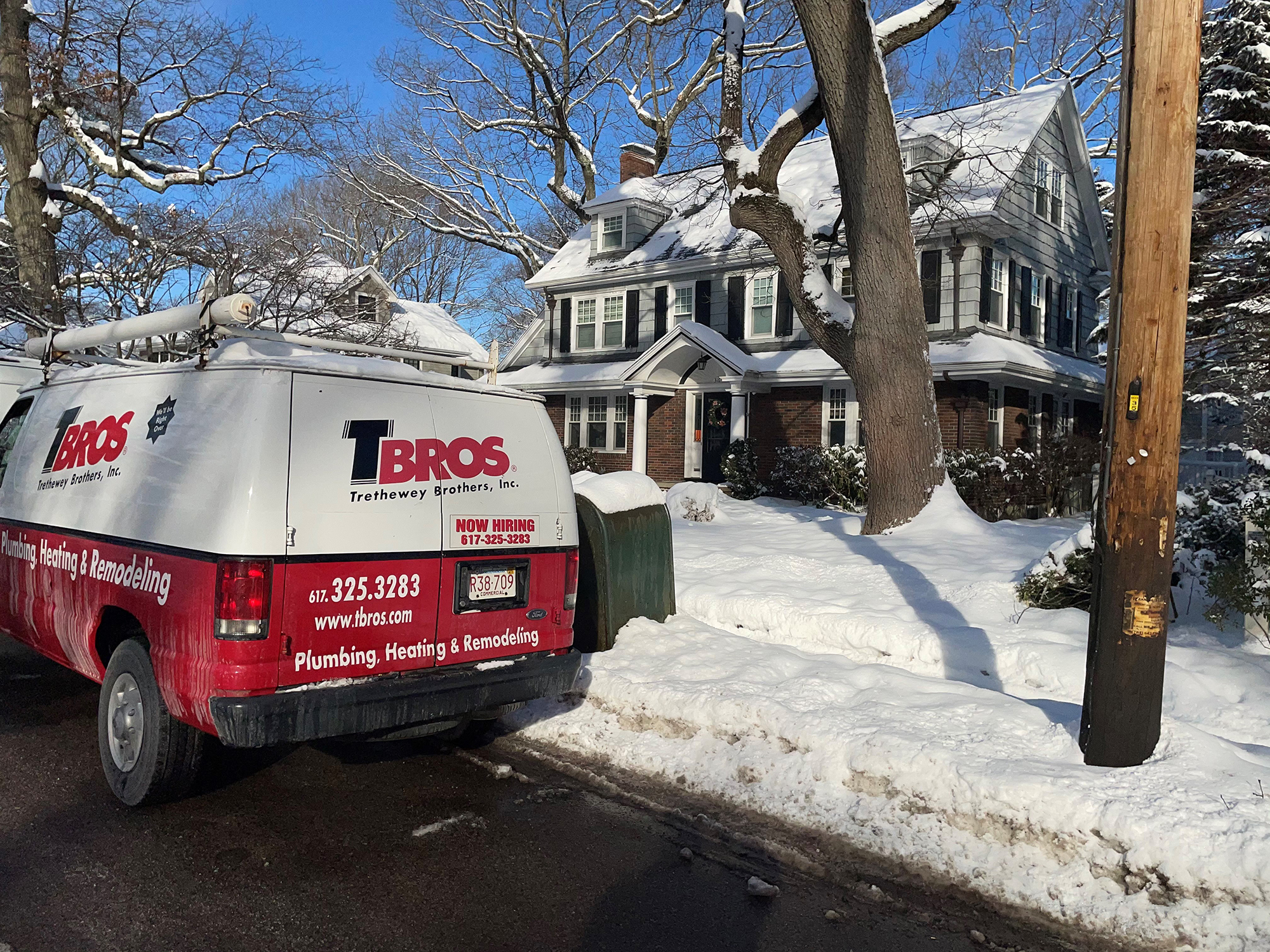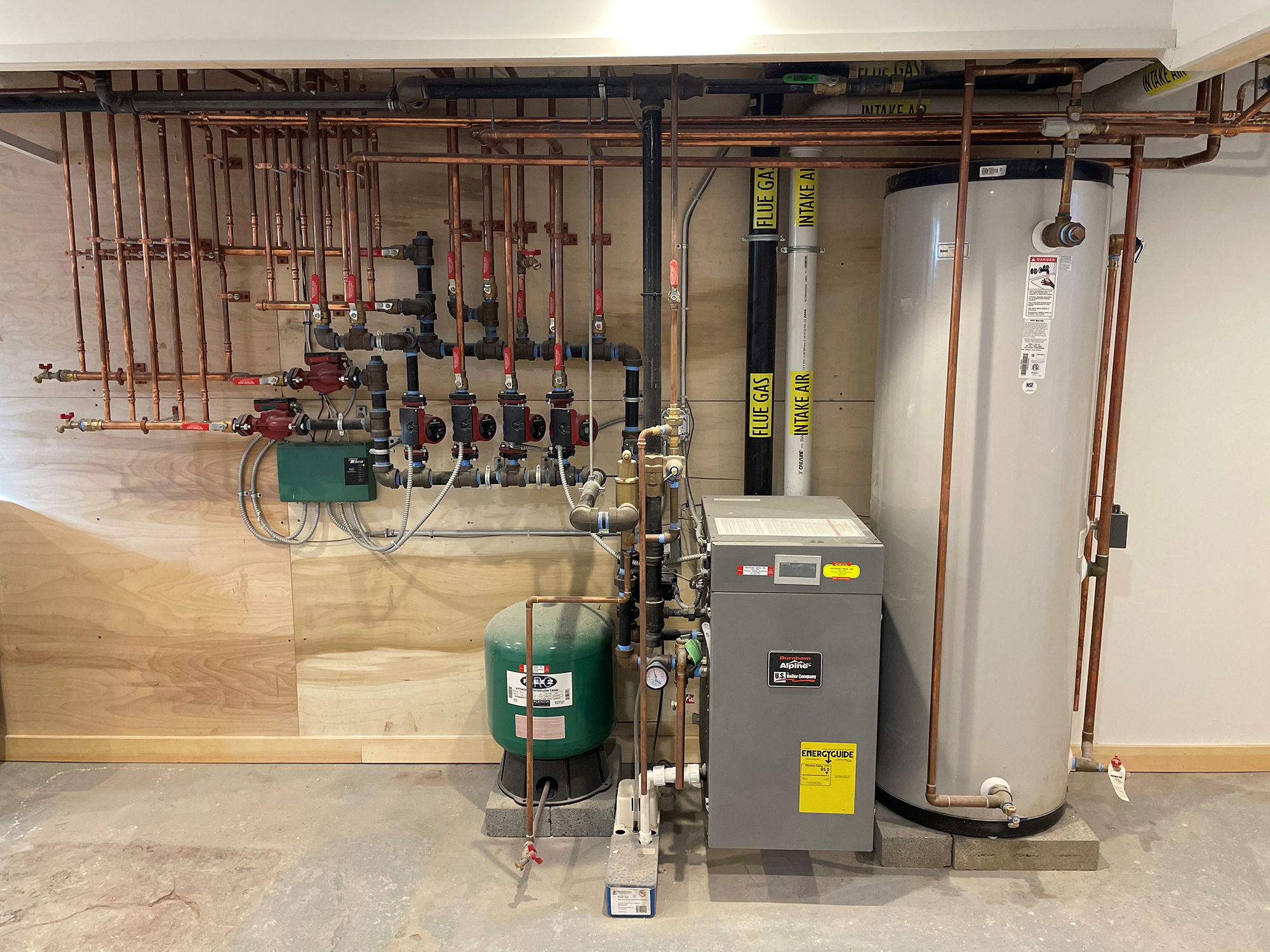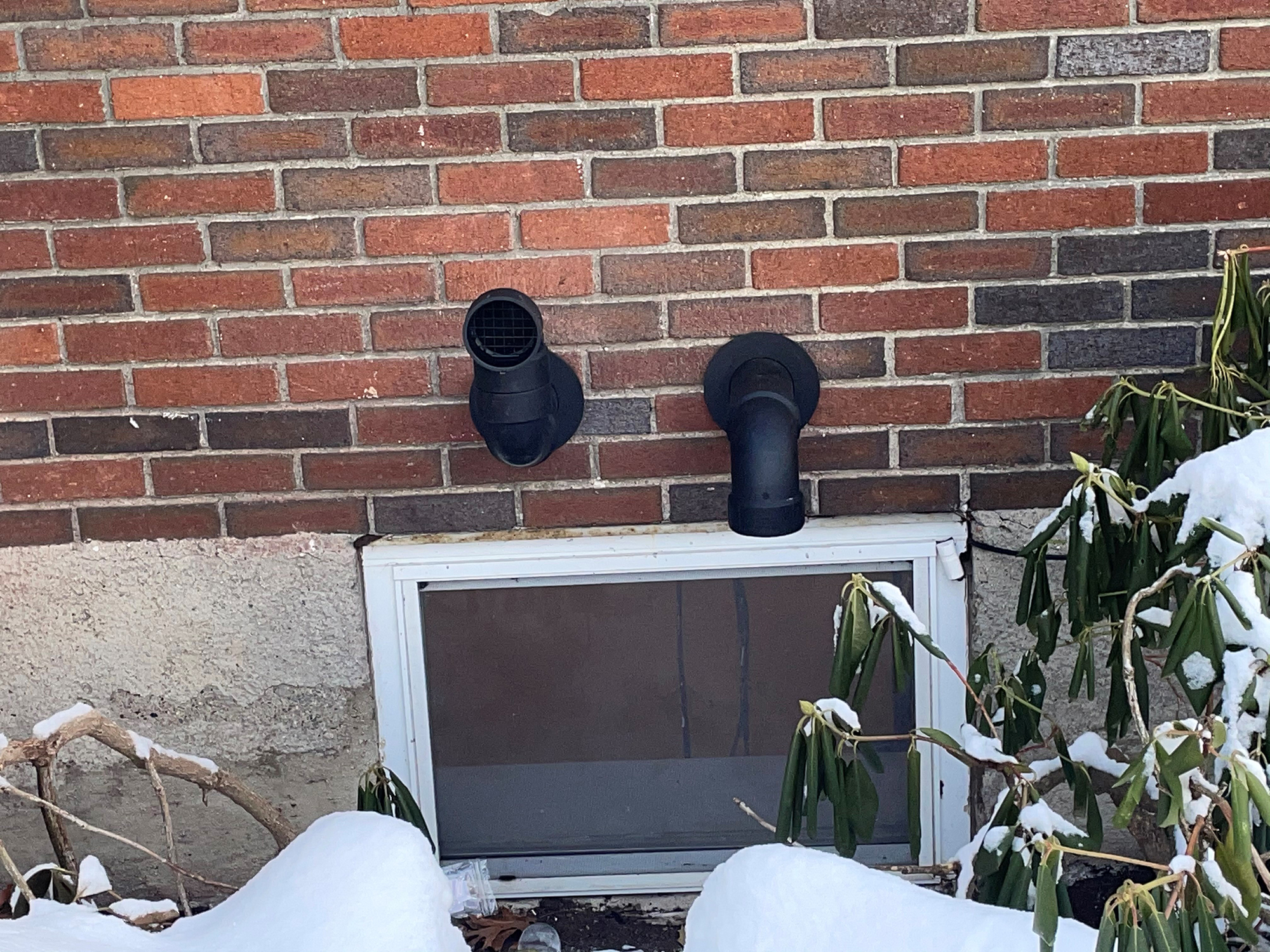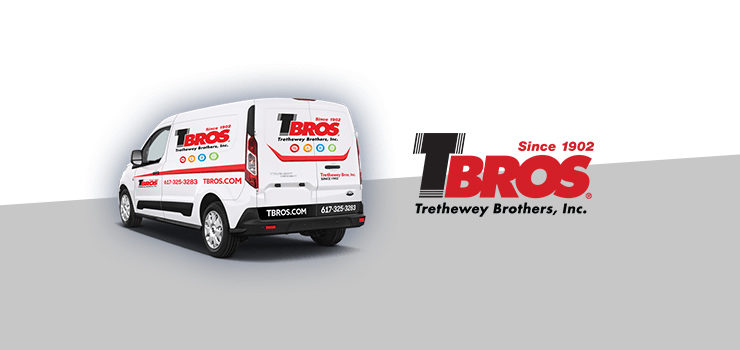Trethewey Brothers opened its door in 1902 on Washington Street in Roslindale, Massachusetts. Now, four generations later, it’s still family owned, but by two families.
“I became a partner in 2010, but I’ve been with the company for 35 years,” said Mike Flanagan. “Bob Trethewey, whose uncle George retired about 11 years ago, is also a partner. Both Bob and I have family in the business.”
Bob’s son-in-law, Eamonn, is a licensed plumber. Mike’s boys, Ryan and Conor, are apprentices. Ryan also runs the company Instagram account. Their Mom, Lisa, works in the office.
Trethewey Brothers (or TBros for short) now has 25 employees and 9 trucks on the road. You may have seen them on “This Old House,” as they’ve been actively involved with the Emmy-winning home improvement series since 1979.
From a dripping faucet to a full remodeling project, their professional plumbing and heating services are available throughout eastern Massachusetts. They take pride in listening to their customers before making suggestions because they are confident they can provide anything the customer wants. Listening first is the best way to start.
“We’re very open and transparent, and have been for more than 100 years,” said Flanagan. “We have young customers whose grandparents swore by TBros, so a few generations later, that family is still a loyal customer.”
The company conducts more than a dozen remodels each year, and they install many boilers in the same time span. More than 80 percent of their boiler installations include high efficiency equipment.
Massachusetts shares a lot of challenges with other parts of New England: traffic, old architecture, and more old steam piping than you can swing a sledge hammer at. As you’d expect, oil to gas conversions, steam to water conversions, and steam to steam upgrades are big business. Every once in a while, something unique comes along.
Make it all new
“A general contractor we’ve worked with in the past referred us to a homeowner in Newton who was finishing his basement in addition to a bunch of remodel work,” said Flanagan. “The homeowners are a young couple with a big and growing family who own a large, three story brick home. They needed more room, and the basement was the best place to get it.”

Above: The TBros install van arrives at the old home, ready for an extensive retrofit.
The unfinished basement was full of mechanical components and low hanging gas, plumbing and hydronic piping. The upstairs of the home was broken into three zones, one per floor, none of which heated correctly. Some rooms would get hot while and others barely heated at all.
“We start each home visit by discussing the issues that the homeowner is facing,” said Brian Craig, outside sales. “Then we conduct a full room-by room heat loss and heat gain calculation. I’ve done it this way for 25 years, all of which I’ve worked under Bob Somerville. We’ve done it this way for a quarter century because it works, plain and simple.”
The plan was to tear out the existing cast iron water boiler, stand-alone gas fired water heater, and figure out what was wrong with the upstairs radiation. To make things more challenging, the homeowner added that they didn’t want PEX used anywhere in the home. Luckily, the general contractor was opening a lot of walls and ceilings, providing access to most of the heating system.
“It became evident that the radiators had been plumbed in series, but they weren’t equipped with mono flow tees,” said Craig. “Water went straight through each of the radiators and by the time it reached the last few radiators in the series, the water was cool. This was not only a comfort issue, but it had destroyed the existing boiler.”
Extremely low return water temperatures caused the boiler to condense. It ran non-stop during heating season and was completely rotted out. The owner wanted a new condensing boiler and ample domestic hot water, so TBros picked an Alpine 210 and an 80 gallon indirect tank.
No PEX, no problem
Plumber and heating technician Andrew Morse, who has been with TBros for 15 years, headed up the project starting in August of 2020. Depending on the day, he was joined by one or two apprentices over the six-week replacement. They started work by removing and replacing all of the piping that hung below the exposed floor joists, including two inch supply and return mains, gas lines, plumbing, etc.
The old radiator risers were cut in the basement and the installation of new copper started. The old series loops were torn out and each radiator was home-runned back to zone manifolds, similar to how a manifold plumbing system would be installed. This ensured that the flow through each radiator would be even, as well as the water temperature.
“We had to be diligent in keeping each line labeled and all of the copper organized,” said Morse. “In all, we installed 800 feet of 1/2 inch copper, all pressed together, making our own manifolds as we went.”
The cost to install copper was obviously higher than PEX, conservatively 30 percent more. The homeowner knew this upfront and was willing to pay the premium.
Value in familiarity
With the copper installed throughout the home, framing of rooms in the basement took shape, allowing Morse to proceed with the boiler installation. The new boiler, manifolds, and piping were hung on a finish grade plywood wall and connected to the five zones and an indirect tank. There was also provision for future zones.

Above: An Alpine 210 and an 80-gallon indirect tank make are a great match for a large home and large family.
“I started using the U.S. Boiler Alpine high efficiency boiler as an apprentice under Mike Flanagan,” said Morse. “I cut my teeth on these units, having personally installed 60 or 70 of them. As reliable as they are, and as easy as they are to troubleshoot, I can’t think of any reason to stop using them. We have them in multiple-boiler applications, commercial jobs, and multi-family projects. You name it, and we’ve installed an Alpine like that.”
Next to the Alpine is an 80-gallon indirect tank. With five people in the home, availability of DHW was a concern. A thermostatic mixing valve is installed on the DHW supply. This allows TBros to keep the tank at 140°F without concern for scalding or legionella bacteria growth, while also maximizing the thermal capacity of the tank.
Since the old boiler was atmospherically vented, with exhaust leaving through a chimney, TBros suggested to seal off the old chimney and install new intake and exhaust pipe through the basement wall. Core drilling the old brick foundation took time, but was better than chasing new pipe up the old chimney.

Above: TBros technicians took the time to core drill the brick basement wall to vent the new Alpine boiler instead of chasing it out the old chimney.
Results speak for themselves
The quality of workmanship was evident on every floor of the house. Both the owner and the general contractor commented on it. More importantly, comfort and efficiency increased a great deal.
“After a heating season, we learned just how much the owners appreciate the new system,” said Flanagan. “The temperature across the zones is even and stable, the boiler is responding perfectly to the outdoor reset control. The home and basement are both quiet.”
In early February, Morse was back onsite to install the last zone in the basement. At that time, when Craig last spoke with the customer, he learned that they’ve been saving 30 to 35 percent on their gas bill.

